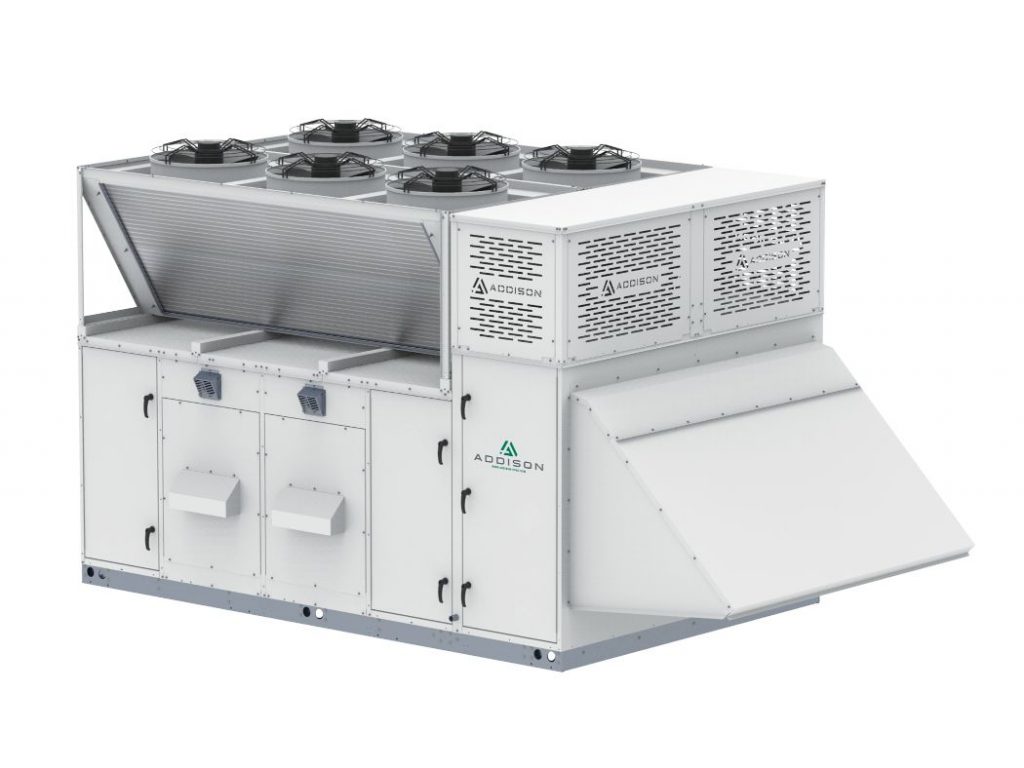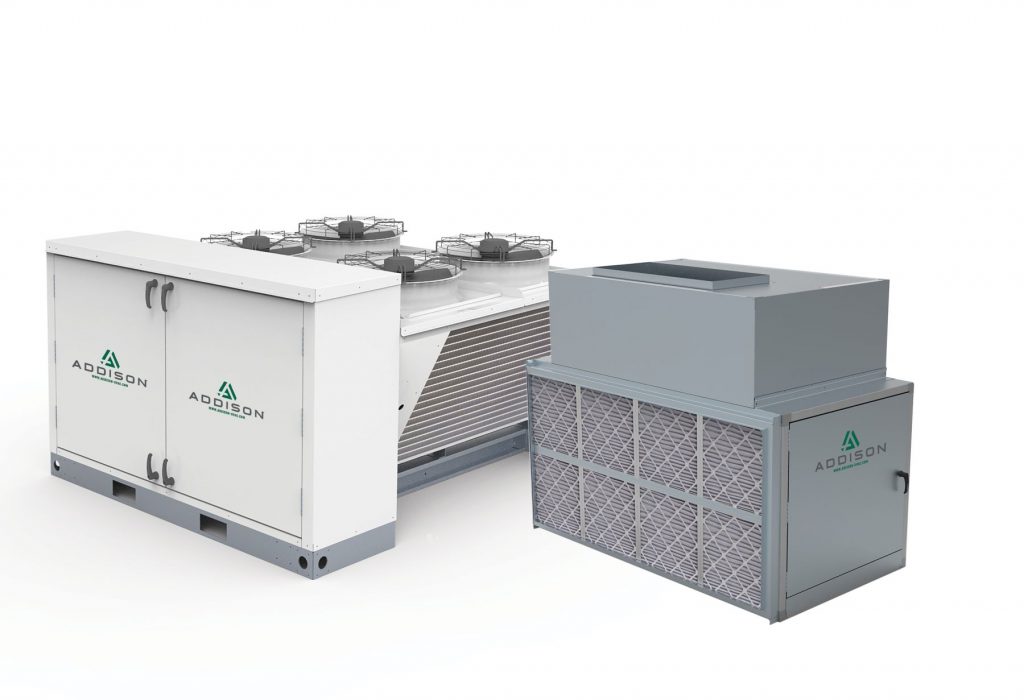Application Guidance
What are Dedicated Outdoor Air Systems (DOAS)?
In its simplest form, a dedicated outdoor air system (DOAS) is a type of HVAC system who’s primary function is to deliver treated outdoor air into the space it serves. These systems filter the incoming air, remove moisture, and generally reheat the air back to 72°F (or neutral). However, due to the inherent flexibility of the Addison product line, these units can be designed for dew point control, make up air, and many other applications.
This fresh, conditioned air improves the indoor environments of a variety of different applications.
Addison dedicated outdoor air systems can come in two different configurations.

Rooftop

Split
Common Misapplications
Things to consider that could get you into trouble in your next project.
- DOAS units are not intended for comfort cooling. Tolerances may be +5.0 degrees F. and +10% relative humidity in the conditioned space.
- Mixed-air unit with ECW, less than 30% outside air and economizer. The exhaust blower will be undersized for 100% airflow in economizer mode.
- ECW with more than 10% of exhaust air from restrooms.
- VAV application with more than 25% turn-down (20% for heat pumps) unless approved by factory.
- Spring isolation on blowers with unit mounted on vibration isolation roof curb.
- Split-systems:
- Straight cool with over 200 equivalent feet refrigerant line length.
- Heat pump with over 100 equivalent feet refrigerant line length.
- Either with more than 60 feet vertical lift (air handler above condensing unit).
- Modulating gas furnace with less than 350.0 MBH and more than 5:1 modulation.
- Failure to maintain recommended clearances for air-source units that could lead to short-cycling of condenser airflow.
- Only selecting lead circuit HGR for dual circuit DOAS units. When the equipment is in the field, it will not be able to get to room neutral on days below the designed outside temps.
- Undersized of improperly installed ductwork.
- Re-circulation unit that cannot meet space load due to higher than 10 to 15% outside airflow.
- Complications with controls provided by others and field-installed. This is often exacerbated on systems with digital or VFD compressors.
Considerations for Tight Construction
Spaces with tight construction need fresh air. As we make our indoor environments tighter, less air flows through them. With less air circulation, pollutants can build up in the space. The pollutants can include carbon dioxide from breathing, smoke from cooking, volatile organic compounds (VOCs) emitted from cleaning materials and consumer products, and moisture, which can lead to mold if not controlled properly. The only proven, energy-conscious solution is a mechanical ventilation system that delivers treated outdoor air. With an extremely airtight envelope and a mechanical ventilation system that controls exactly where and how much air is delivered, you get the quantity of fresh air you need, deliver the fresh air where it’s needed, and you get it no matter the conditions of the outdoor air.
